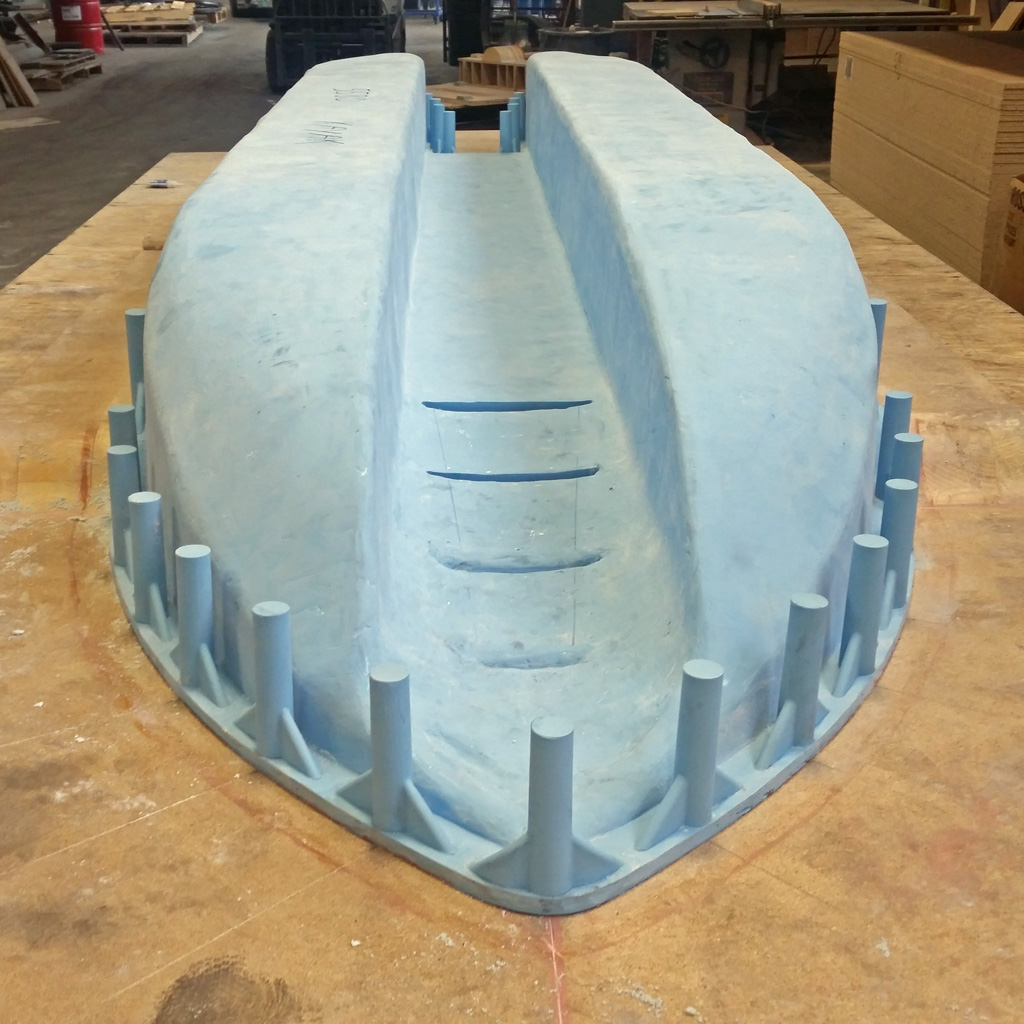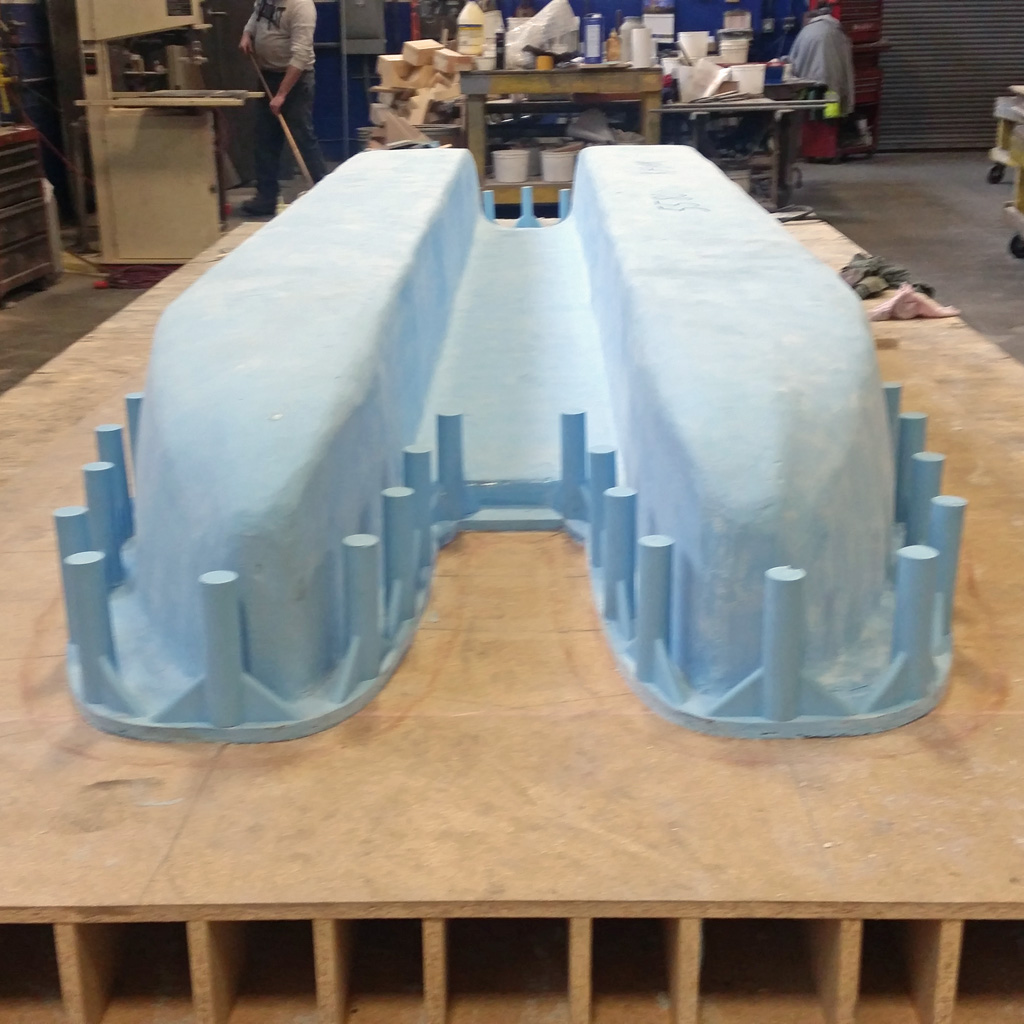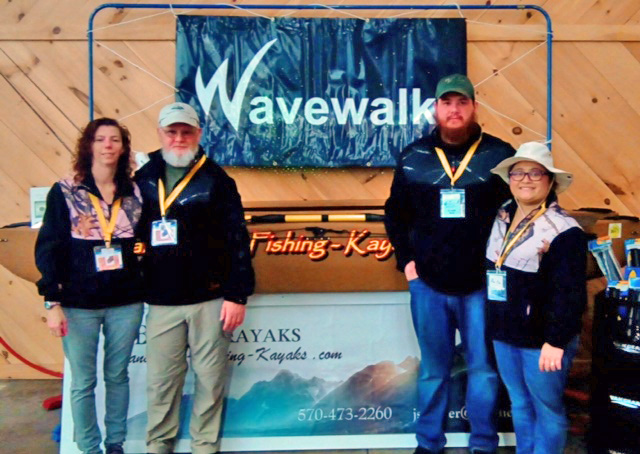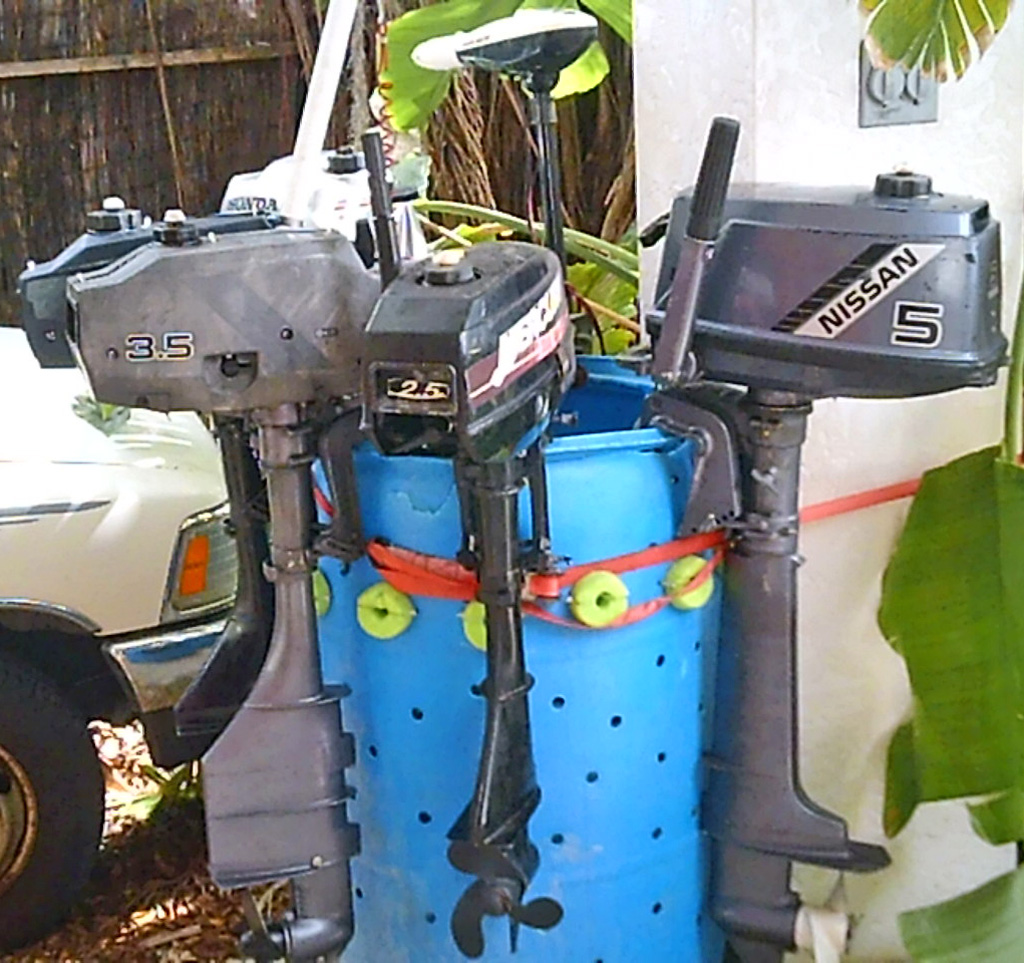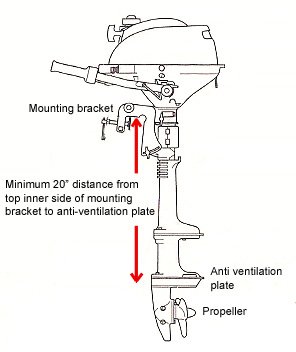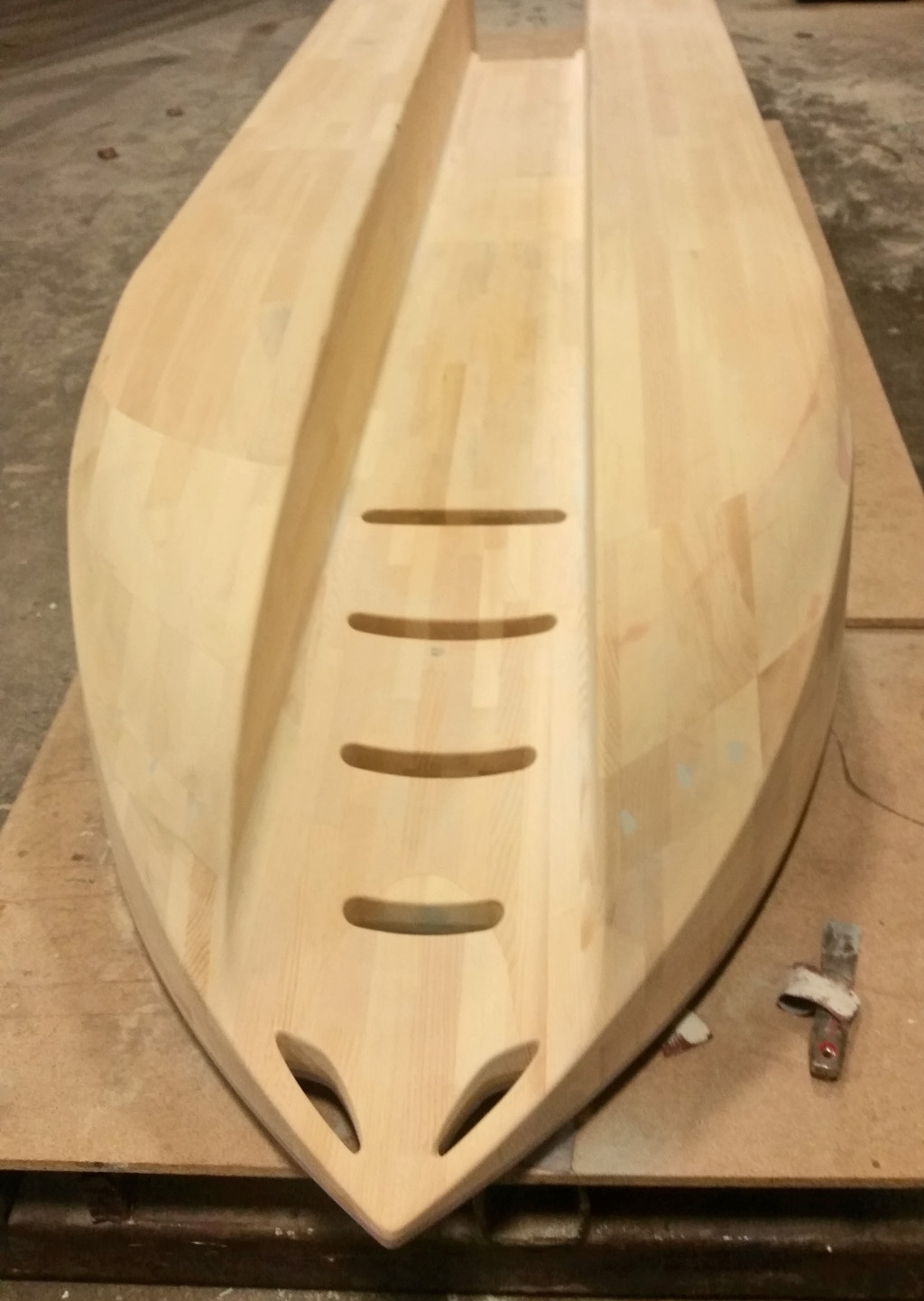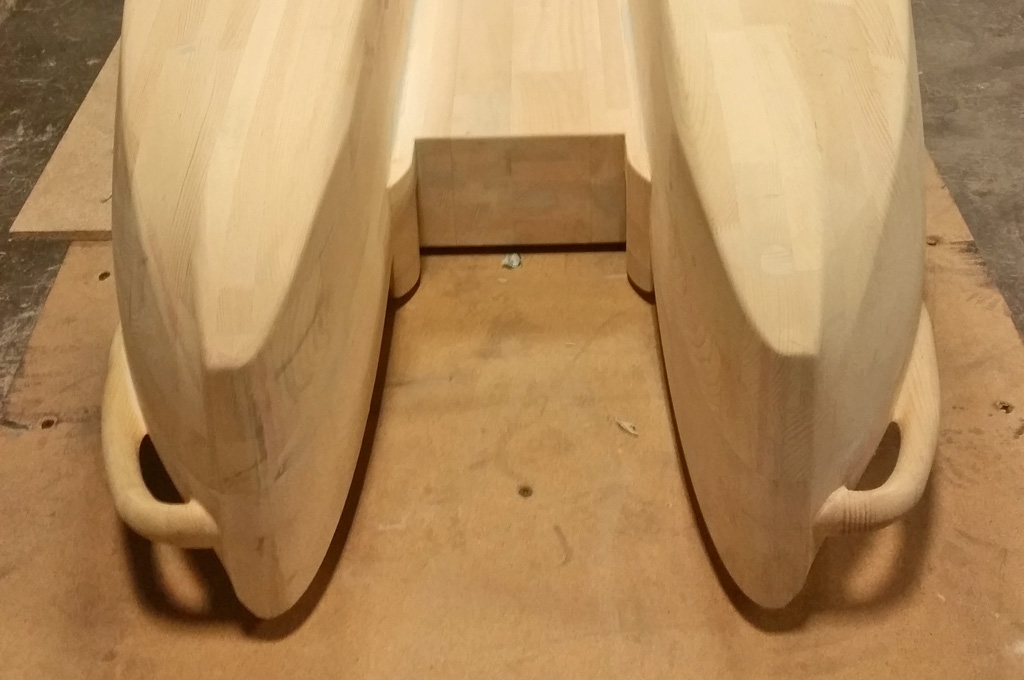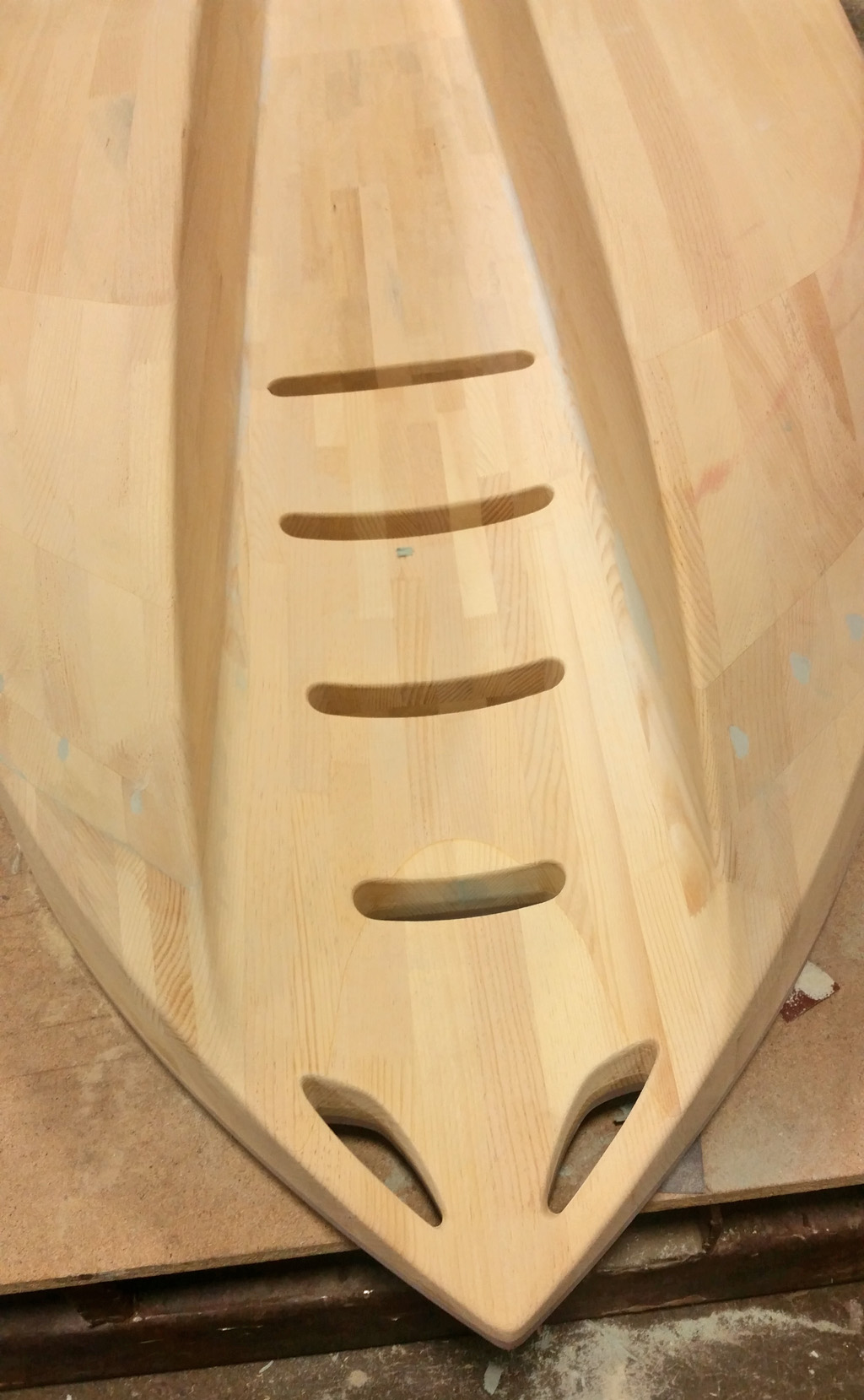This article summarizes the research that Captain Larry Jarboe, of Florida Fishing Kayaks and Boats in Key Largo, Florida did on this subject, and we are very grateful to him for this exceptional contribution.
Background –
Larry’s main goal in conducting this series of experiments that lasted for several weeks was to find the “sweet spot” for 15″ (S) outboards, namely a setup that would enable him to successfully outfit W500 and W700 boats with such motors, which are typically cheaper and easier to come by than 20″ (L) motors.
His secondary goal in running these extensive tests was to check the performance of Wavewalk’s TMM 700 HD motor mount, and see if we could improve it.
Larry is a passionate fisherman, mechanic, and seaman. He works as a commercial fisherman and fishing guide, and he is Wavewalk’s distributor in Southern Florida.
For the past fifty years, Larry has been involved in using, building, refurbishing and testing motors in various land and water vehicles, including electric racing cars, regular cars and trucks, a wide range of small watercraft, and big diesel engines in stern-drive commercial fishing boats, such as he still operates in Key Largo.
Means and Method –
In his tests Larry used five portable outboard gas motors that he had refurbished and tuned himself. Some of the motors had 15″ short shafts, and the others had 20″ long ones, and their horsepower rating ranged from 2 HP to 5 HP. He also tested a couple of electric trolling motors.
Larry conducted his experiments systematically – Being a handyman as well as a mechanic, he built a series of transom motors mounts that enabled him to mount outboard motors of both sizes in various places at the boats’ stern.
In his tests, he changed the height of the mounting plate, and/or its distance from the cockpit’s rear end.
Results –
There is no “sweet spot” for mounting a 15″ short (S) shaft motor on a Wavewalk, and any configuration involving the use of such size motor would inevitably result in sub-optimal performance compared to the use of a 20″ long (L) shaft outboard motor of the same power.
The main problems that Larry found with 15″ short (S) shaft outboard were the following:
Ventilation
Outboard manufacturers recommend mounting outboard motors with their anti ventilation plate (sometimes called “anti-cavitation” plate) immersed a couple of inches below the boat’s lowest point, which by definition is always immersed. This inevitably means that the anti ventilation plate is several inches below the surface. If the propeller rotates with its blades too close to the surface, it sucks air from the surface, and instead of rotating in water it rotates in a mixture of water and air bubbles. As a result, the propeller loses efficiency and power.
- At higher speed – Larry found that with 15″ short (S) motors, ventilation started to occur at about 5 mph, when the boat was transitioning from a displacement mode into a semi-planing mode, and its hulls were slightly raised, thus pulling the propeller upward and too close to the surface. The higher the speed the more extensive the ventilation and power loss. No ventilation occurs with 20″ long (L) shafts, even at speeds higher than 12 knots (13 mph), when the boat is in a full planing mode.
- When making sharp turns – Larry found that the 15″ short (S) motors’ propellers sucked air from the surface while he was making sharp turns. This happened since the boats tilted on their side, and the propellers got too close to the surface. In this case, ventilation resulted in loss of power as well as loss of control, to some extent, which made turning more difficult. Such problem did not occur with 20″ long (L) shaft motor, which performed flawlessly in sharp turns at high speed.
Splashing and discomfort
Splashing – In order to avoid ventilation, it is possible to mount 15″ short (S) shaft outboards at a lower level, with its propeller immersed more deeply. This can be done when a specially designed motor mount is placed several inches behind the cockpit’s rear end. However, at such position, the lower part of the motor mount’s vertical mounting plate is too low and too close to the surface of the water, and it will come in contact with the water. In such cases, the result is spray splashing over the motor’s head and into the cockpit’s rear end. No such problems occur with 20″ long (L) shaft outboard motors when mounted correctly on a standard Wavewalk motor mount.
Discomfort – When the 15″ short (S) outboard is mounted several inches behind the cockpit’s rear end, it is harder for the user to reach the motor and its controls (e.g. choke knob, starter grip), and it is harder for them to steer. This is not the case with 20″ long (L) motors that are mounted at the rear of the cockpit.
Bottom line
There is no “sweet spot” setup that allows for mounting a 15″ short (S) shaft outboard on a Wavewalk (500 or 700) without it incurring serious drop in performance. The way to motorize a Wavewalk is to follow the recommendations of outboard manufacturers about mounting their motors, as well as Wavewalk’s recommendations that fully coincide with them, namely to use only 20″ long (L) outboard motors with Wavewalk’s kayaks and boats.
A sweet spot, sort of…
When Larry checked 15″ short shaft, weak electric motors, he found that the ventilation problem at higher speed didn’t occur, because such motors lack the power to propel a kayak at speeds that are high enough to make it reach a semi-planing mode, or have the propeller suck in air from the surface. Knowing about such a sub-optimal performance envelope, the user already expects sub-optimal performance. This said, this rule is not ironclad, and ventilation may still occur in case the boat makes a sharp turn.even when it is propelled by such weak 15″ short electric motors, and while going at low speeds.
This is to say that Wavewalk recommends not to use short shaft motors even in the case of weak electric trolling motors.
In sum, the only propeller shaft size that we recommend for all types of motors is 20″ long (L)
More reading: How to measure an outboard motor’s propeller shaft length? »
Do you have any questions for us?
